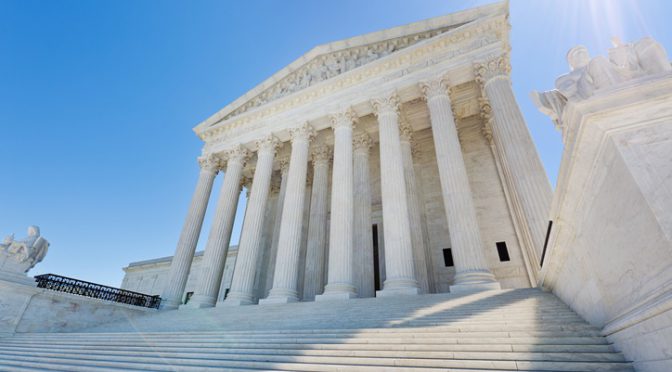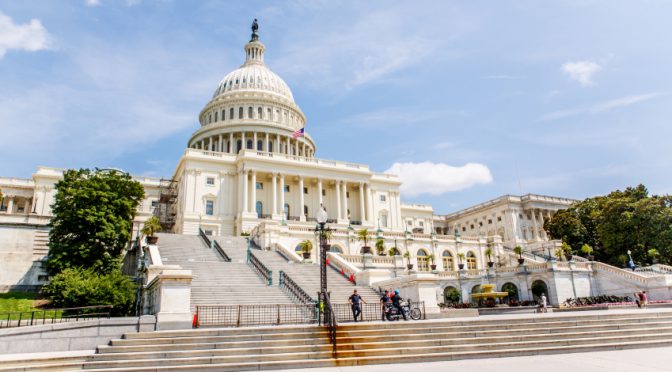By Sean Robins, NACAC’s director of advocacy
Welcome to the second issue of the Advocacy Update on NACAC’s Admitted blog. We remain energized by the positive feedback from our first issue and are excited to continue providing members with timely insights on federal policy, legislative developments, and NACAC’s ongoing advocacy efforts. In a rapidly shifting landscape for higher education, our goal is to equip you with clear, actionable information that reflects both the challenges we face and the steadfast work underway to protect equity, access, and opportunity in college admission counseling.
Policy & Legislative Updates
The Trump administration issued a Presidential Memorandum directing the Department of Education to require colleges to report racially disaggregated admission data for applicants, admitted students, and enrollees starting in 2025–26. The changes will apply to undergraduate and certain graduate and professional programs. While framed as an effort to improve transparency, the move comes amid heightened scrutiny of race-conscious policies in admission, and NACAC continues to defend the role of holistic review and personal lived experience. The Education Department said the Presidential Memo, published Aug. 15, requires selective four-year colleges to report five years of detailed, racially disaggregated admission data — including GPA, test scores, timing of application, and financial aid status — with a 60-day public comment period to follow. Concerns remain about how the department will handle and analyze this data given staffing cuts at the National Center for Education Statistics.
The administration has retreated from its threat to strip Harvard of its ability to enroll international students, a move the university called unconstitutional and retaliatory. The Department of Homeland Security said it will not proceed based on the original letter, though legal disputes remain. Separately, the administration is demanding over $1 billion from UCLA to unfreeze $584 million in research funds, as well as broad conditions banning race-based scholarships, gender-affirming care, and overnight protests, among other restrictions. A federal judge has ordered partial restoration of certain National Science Foundation grants to UCLA, ruling that “suspensions” violate an earlier order barring terminations. California Gov. Gavin Newsom has vowed to fight the settlement demands, calling them an attack on academic freedom.
In other legal developments, the Trump administration has issued an executive order requiring political appointees to review all federal grant opportunities before publication, pausing new announcements and banning funding for projects tied to racial equity, gender identity, immigration, and other so-called “anti-American values.” Courts have previously blocked similar efforts, but the new directive intensifies political oversight of research funding. A divided Fourth Circuit panel has also allowed the Department of Government Efficiency (DOGE) to access sensitive federal records, citing the agency’s IT modernization role.
A new antitrust lawsuit was filed against 32 selective institutions, the Common Application, Scoir, and the Consortium on Financing Higher Education regarding early-decision admission policies. Plaintiffs allege that sharing names of early-decision admits suppresses competition and limits students’ ability to compare aid offers.
The administration is also increasing scrutiny of geographic recruitment practices in admission, warning colleges that targeting areas based on racial or ethnic composition could be considered unlawful proxies for race. NACAC has emphasized that geographic outreach is shaped by multiple factors, including serving historic communities and responding to demographic shifts.
Other notable developments include:
- The administration’s move to end race-conscious admission at military academies prompted Students for Fair Admissions to withdraw lawsuits against West Point, the Air Force Academy, and the Naval Academy.
- A federal appeals court ruling ordered the White House budget office to restore a public spending timeline website
- Education Secretary McMahon began a national tour promoting the dismantling of the Department of Education, which would require congressional approval and face legal challenges.
Meanwhile, advocates warn of escalating federal actions to roll back protections for Dreamers and undocumented students, including revoking ACA coverage, investigating scholarships, and detaining recipients. Institutions are urged to stand firm on lawful programs, prepare protocols for enforcement visits, and affirm equitable access for all students. The Presidents’ Alliance has developed a resource offering strategies to support undocumented students and safeguard opportunities. Finally, a federal judge has again blocked the administration from laying off nearly half of the Department of Education’s Office for Civil Rights staff, though none of the 276 terminated employees have been reinstated.
NACAC Advocacy
NACAC is closely monitoring the Trump administration’s new directive requiring colleges to report detailed applicant, admit, and enrollment data — including race, sex, test scores, and GPAs. While we have long supported more disaggregated data to improve transparency, we strongly oppose this administration’s motives, which appear aimed at using the information to undermine diversity in admission. Admission decisions have never been based solely on numbers; holistic review allows colleges to recognize resilience, leadership, and context-based potential that standardized tests — long known to reflect systemic inequities — cannot capture. This policy risks pushing institutions toward less diverse student bodies, particularly harming first-generation and low-income students, while favoring those with greater financial resources.
In support of our members, NACAC is sharing a new resource from our partner, EducationCounsel. Called Misguidance, the resource analyzes the Department of Justice’s July 29 memo on DEI. The analysis finds that the DOJ guidance misrepresents federal civil rights law and overreaches in ways that could mislead schools about what is legally permissible. While some points in the DOJ memo reflect current law, much of it advances policy preferences that could deter institutions from lawfully addressing barriers, advancing diversity, and ensuring equal opportunity. EducationCounsel emphasizes that inclusive practices, the use of disaggregated data, and race-neutral strategies that support students remain fully lawful. Education leaders should be guided by actual law — not the administration’s anti-DEI stance.
NACAC will continue advocating for admission policies that value the full breadth of student achievement, reject the false premise that test scores define merit, and protect the ability of colleges to create equitable pathways to higher education for students from all backgrounds.
Ways You Can Take Action
We are continuously updating our Take Action page with opportunities to make your voice — and the voices of our members — heard. If you have not already, I encourage you to advocate on the urgent issues below. You can also view all active advocacy campaigns in the yellow column of the Take Action page.
- Tell Congress: Prioritize Visa Appointments for International Students and Scholars
- Urge Congress to Protect Postsecondary Pathways
- Tell Congress: International Students are Essential to America’s Safety, Economy, and Global Strength \
- Tell Congress to Not Abandon Our National Commitment to Education
- Urge Congress to Protect Disabled Students
- Don’t Flunk the Future Advocacy Toolkit
Though the challenges in higher education and equitable access may feel daunting, our work presses on with purpose. Through advocacy, we support students from all backgrounds, helping prepare the next generation of leaders. As Malala Yousafzai reminds us:
“When the whole world is silent, even one voice becomes powerful.”
Her words are a call to action. Every conversation we have, every resource we share, and every engagement with lawmakers strengthens the voices of students and counselors alike. NACAC will continue to be that voice, defend equitable opportunity, and ensure every student has a real chance to reach their potential.



